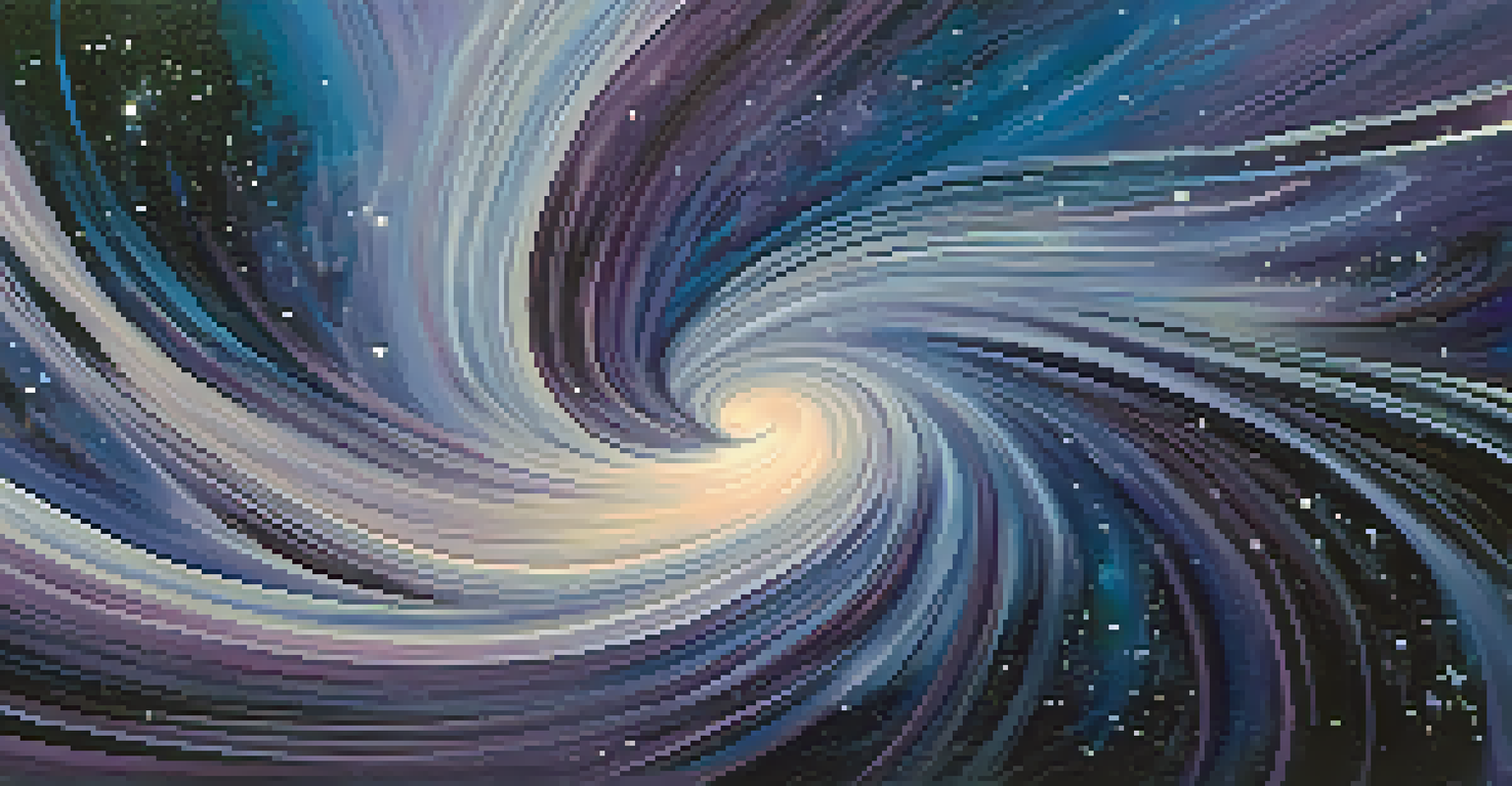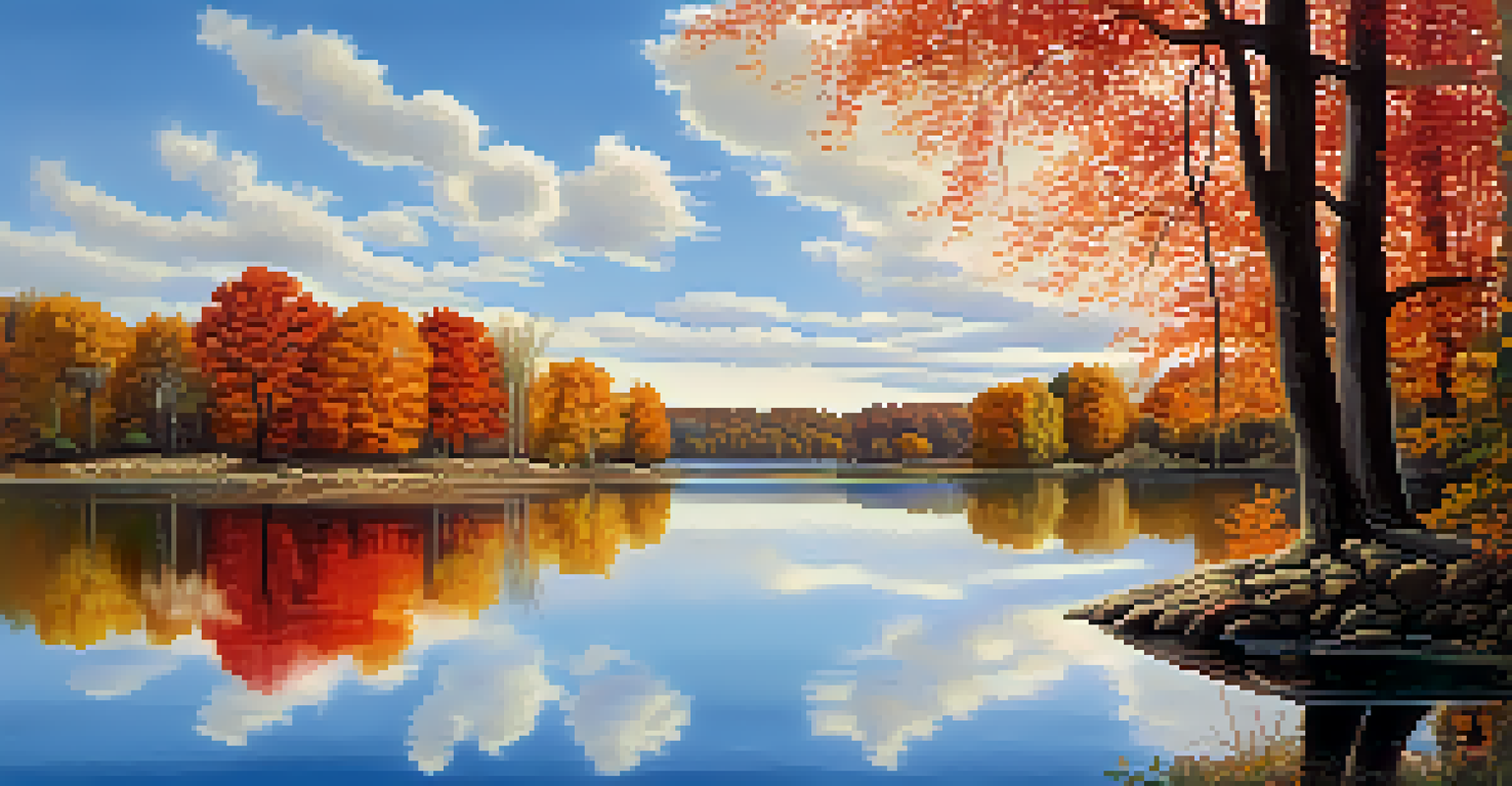Artistic Inspiration: Famous Authors and Their Visual Influences

The Interplay of Visual Art and Literature
Visual art and literature have long shared a symbiotic relationship. Many authors draw upon visual elements to enrich their narratives, creating a tapestry of imagery that enhances the reader's experience. By understanding how these two forms of expression interconnect, we can gain deeper insights into the creative process.
Art is the most beautiful of all lies.
For instance, the vivid descriptions found in Virginia Woolf's works often reflect the impressionist paintings of her time. Her ability to capture fleeting moments mirrors the brushstrokes of artists like Monet. This connection highlights how visual art can serve as a wellspring of inspiration for writers seeking to evoke specific emotions or atmospheres.
Moreover, the influence of visual art extends beyond mere description; it shapes themes and character development. Authors like F. Scott Fitzgerald drew on the vibrant colors and shifting styles of the Roaring Twenties to construct their narratives, illustrating how cultural visual trends can resonate within the written word.
Vincent van Gogh: A Muse for Modern Writers
Vincent van Gogh's paintings are celebrated for their emotional depth and vivid colors, qualities that have inspired countless authors. Writers like Irving Stone and Laura Pritchett have crafted novels centered around van Gogh's life, exploring his struggles and triumphs through their narratives. This fusion of art and literature showcases how visual artists can inspire storytelling.

The swirling skies and bold brushstrokes in van Gogh's works evoke a sense of turbulence and passion, themes that resonate with many contemporary writers. For example, the way he captured the essence of a moment can inspire authors to focus on the sensory details in their writing, making it more immersive for readers.
Art Inspires Literary Creation
Visual art serves as a powerful source of inspiration for writers, enhancing narratives through vivid imagery and emotional depth.
Moreover, van Gogh's letters to his brother Theo reveal his thoughts on art and life, offering a glimpse into the mind of a true visionary. These personal reflections can serve as a rich source of inspiration for writers looking to explore the intersection of creativity and mental health.
Georgia O'Keeffe: A Literary Inspiration
Georgia O'Keeffe's striking floral paintings and desert landscapes have influenced many writers, inviting them to explore themes of femininity and nature. Authors such as Annie Proulx have drawn from O'Keeffe's imagery to create vivid settings that reflect the emotional landscape of their characters. This demonstrates how visual art can evoke a sense of place in literature.
A picture is worth a thousand words.
The bold forms and colors in O'Keeffe's work invite authors to delve into the subtleties of perception, encouraging them to express their ideas through rich, descriptive language. Her unique perspective on the natural world serves as a reminder of how the visual can inform the written, creating a dialogue between the two art forms.
Additionally, O'Keeffe's life story—balancing her artistic ambitions with societal expectations—provides a compelling narrative for writers to explore. Her journey inspires many to examine their own creative paths, making her an enduring muse in both visual and literary realms.
The Influence of Surrealism on Writers
Surrealism, with its dreamlike imagery and unexpected juxtapositions, has had a profound impact on literature. Authors like Gabriel García Márquez and Haruki Murakami have embraced surreal elements in their works, drawing inspiration from surrealist artists such as Salvador Dalí and René Magritte. This blending of visual and literary art creates a unique experience for readers.
The ability of surrealist art to challenge perceptions and evoke emotions resonates with writers seeking to push the boundaries of traditional storytelling. For instance, the bizarre scenarios depicted in Dalí's paintings can inspire authors to explore themes of identity and reality, creating narratives that captivate and perplex.
Surrealism Shapes Modern Narratives
The dreamlike quality of surrealism influences writers to explore unconventional themes and push the boundaries of storytelling.
Moreover, the exploration of dreams and the subconscious in surrealist art encourages writers to delve into their own psyche. By tapping into this rich vein of inspiration, authors can create works that are not only imaginative but also deeply personal.
The Impact of Photography on Narrative Styles
Photography has emerged as a powerful visual influence on literature, shaping narrative styles and techniques for many authors. Writers like Joan Didion and Susan Sontag have drawn upon photographic imagery to enhance their storytelling, using it as a tool to explore memory and identity. This intersection invites readers to consider the relationship between image and text.
The ability of photography to capture a moment in time allows authors to reflect on the complexity of human experience. For instance, the stark realities portrayed in photojournalism can inspire writers to address social issues with a sense of urgency, bringing attention to important narratives that might otherwise be overlooked.
Additionally, the visual nature of photography encourages writers to think critically about their own imagery. By incorporating elements of visual storytelling, authors can create multi-layered narratives that resonate with readers on both emotional and intellectual levels.
The Role of Abstract Art in Literary Expression
Abstract art, with its emphasis on form, color, and texture, has inspired writers to explore non-linear narratives and experimental styles. Authors such as Virginia Woolf and James Joyce have embraced abstraction in their works, reflecting the complex nature of human thought and perception. This artistic freedom allows for a more fluid exploration of character and theme.
The ambiguity present in abstract art can encourage writers to break away from traditional storytelling constraints. For example, Woolf’s stream-of-consciousness technique mirrors the fragmented nature of abstract compositions, inviting readers into the inner workings of her characters' minds.
Graphic Novels Merge Art and Words
The innovative blend of visuals and narratives in graphic novels creates a unique reading experience that captivates diverse audiences.
Moreover, the emotional resonance of abstract art can serve as a catalyst for introspection in literature. By tapping into the feelings evoked by these pieces, writers can create narratives that resonate with readers on a deeply personal level, fostering a connection that transcends conventional storytelling.
The Visual Influence of Graphic Novels on Literature
Graphic novels have revolutionized the way stories are told, merging visual art with narrative in innovative ways. Authors like Neil Gaiman and Alison Bechdel have harnessed the power of illustrations to enhance their storytelling, creating a unique reading experience that blends text and imagery. This evolution has expanded the possibilities of literary expression.
The interplay of visuals and words in graphic novels allows authors to convey complex emotions and ideas with clarity. For instance, the use of color and layout can emphasize key moments in the narrative, making the reading experience more dynamic and engaging.

Moreover, graphic novels often explore themes that resonate with diverse audiences, breaking down barriers between literary genres. This fusion invites both casual readers and literary enthusiasts to appreciate the art of storytelling in new and exciting ways.
Conclusion: The Enduring Connection Between Art and Literature
The relationship between visual art and literature is a rich tapestry woven through history, showcasing how these two forms of expression influence one another. As we've seen, famous authors have drawn inspiration from various artistic movements and individual artists, resulting in works that are both visually and narratively compelling. This interplay enriches the literary landscape and encourages a broader understanding of creativity.
Whether it’s the emotional depth of van Gogh, the boldness of O'Keeffe, or the dreamlike quality of surrealism, visual art continues to ignite the imaginations of writers. By embracing these influences, authors can create multi-dimensional narratives that resonate with readers on multiple levels.
Ultimately, the enduring connection between art and literature serves as a reminder of the power of creative expression. As we continue to explore the ways in which visual influences shape our favorite stories, we celebrate the creativity that transcends boundaries, inviting us all to find inspiration in the world around us.